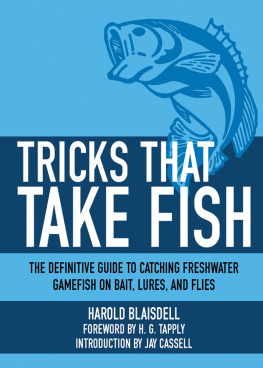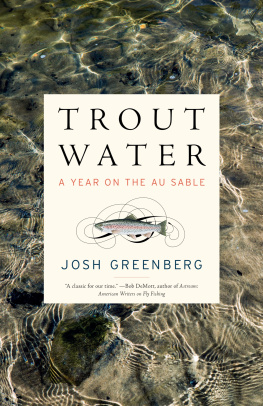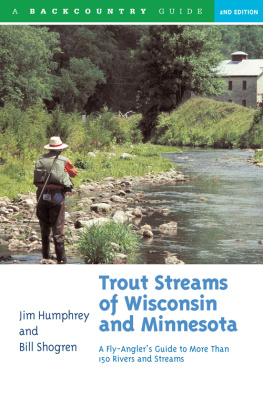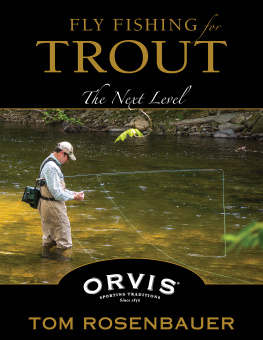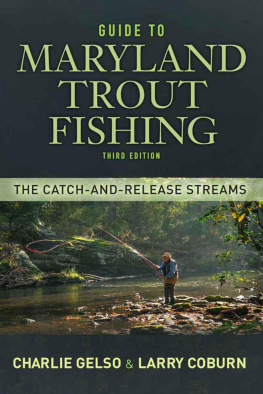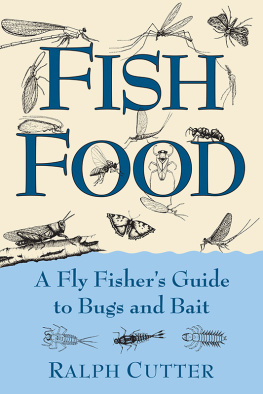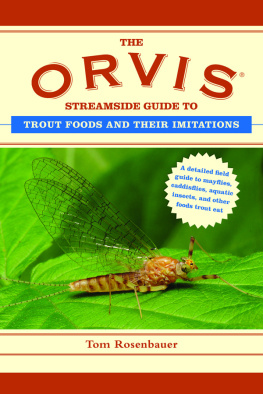

Discover more Fishing books, eBooks, and expert advice from the best in the field
With expert instruction and detailed, step-by-step photos, Stackpoles Fishing titles help advance your skills to the next level.
Visit
Stackpole Books Fishing webpage
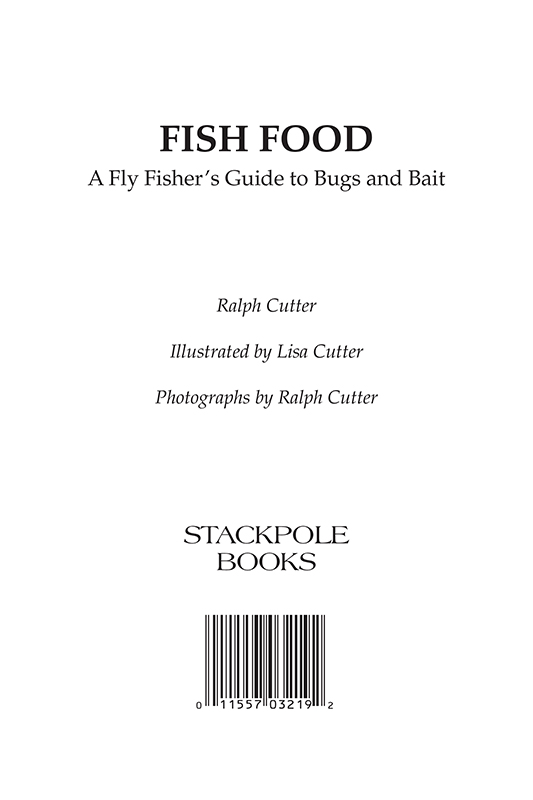
Copyright 2005 by Stackpole Books
Published by
STACKPOLE BOOKS
5067 Ritter Road
Mechanicsburg, PA 17055
www.stackpolebooks.com
All rights reserved, including the right to reproduce this book or portions thereof in any form or by any means, electronic or mechanical, including photocopying, recording, or by any information storage and retrieval system, without permission in writing from the publisher. All inquiries should be addressed to Stackpole Books, 5067 Ritter Road,Mechanicsburg, Pennsylvania 17055.
Printed in China
First edition
10 9 8 7 6 5 4 3 2 1
Cover art by Lisa Cutter
Cover design by Caroline Stover
Library of Congress Cataloging-in-Publication Data
Cutter, Ralph, 1955
Fish food : a fly fishers guide to bugs and bait / Ralph Cutter ; illustrated by Lisa Cutter ; photographs by the Ralph Cutter.
p. cm.
Includes index.
ISBN 0-8117-3219-3 (alk. paper)
1. Fishing baits. 2. TroutFood. I. Title.
SH448.C88 2005
799.1757dc22
2004027290
ISBN 978-0-8117-3219-2
eBook ISBN 978-0-8117-4285-6
Dedicated toRoland Knapp
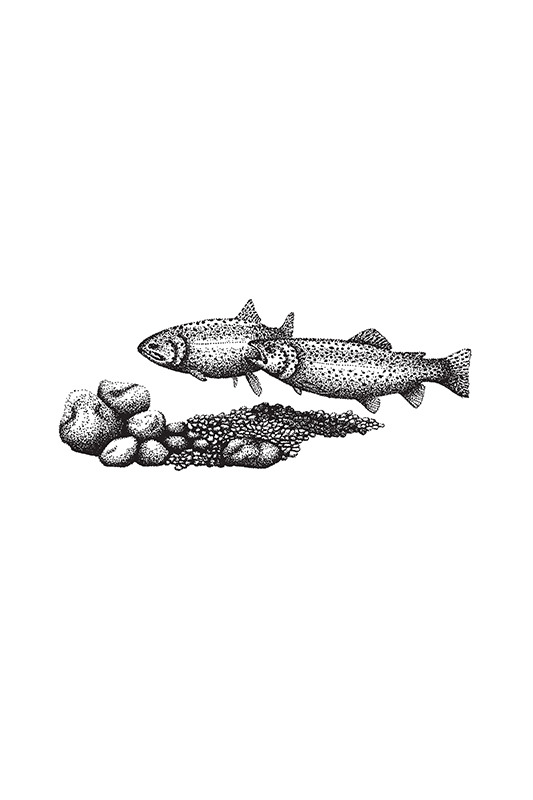
Foreword
Those of us of a certain age remember a time when matchingthe hatchif we deigned to match it at allconsisted merely ofinspecting an insect perched on the water s surface and thenchoosing some generic pattern such as an Adams or a Quill Gordon to imitate it. Which we didntimitate, that is. At best, wewere within the proverbial ballpark with regard to size and, perhaps, color. That we still caught trout when the fish were actually keying on emergers or spinners said more for our quarrysoccasional profound stupidity than it did for the supposedinsight of the angler.
Over the years, however, the base of knowledge on which our sport is built has grown tremendously. Walk into a fly shop now, and youre confronted with bins holding parachute-style mayflies, no-hackles, cripples, beadhead nymphs, vernille worms (worms!), and giant foam-bodied ants. All of which speaks to one of the underlying truths of fly fishing: To fish well, you have to be willing to observe and adapt. The plethora of fly patterns now available, the concurrent evolutions in tackle andtactics, are the direct result of observation and adaptation.
Those of us who fish Californias waters have long recognized that one of the masters of observation and adaptation is Ralph Cutter. His Sierra Trout Guide, first published more than two decades ago, remains the essential text not just for anglers who seek success in John Muirs Range of Light, but for anyone who wants to learn the natural histories of its fish. His popular column on trout foods in California Fly Fisher magazine has helped innumerable anglers fish smarter. Ralph is known for snorkeling rivers and lakes and for traveling vast distances byfoot and by vehicle, the better to understand the habits of aquaticpredator and prey. This curiosity, along with a willingness toexperiment, has led to innovations in fly design and anglingtechniques. (Ralphs E/C Caddis is now my go-to pattern formost waters.)
Ralph Cutter is a fly fishers fly fisher: an expert at handling a fly rod, certainly, but also inquisitive and, just as important, iconoclastic. As youll learn from this book, he takes nothing for granted. And the knowledge youll gain from Ralphs hard workwill surely improve your ability to tempt trout to your fly.
Richard Anderson
California Fly Fisher
Truckee, California
September 16, 2004
Preface
The goal of this book is to stop you from fishing stop you fromfishing long enough to open your eyes and question reality. Itwasnt so long ago that common knowledge supported the beliefthat flies evolved from rotting meat. I fished for decades contentin the notion that, like flies spontaneously emerging from abloated cat, little yellow stoneflies emerged from midstream.How could they not? All my fishing friends said they did, and Ispent countless summer evenings watching the little bugs popout of the water and flutter away to the freedom of the skies.
In the midst of one such hatch, I stopped fishing long enough to stretch a seine across the film to sample the insect population. A short while later, I pulled the soggy net to shore and counted the bugs. There were some leaves, a clot of algae, and a stick. There were also half a dozen mayfly nymph exoskeletons, some caddisflies, and a bunch of bedraggled little yellow stoneflies. It wasnt until several days later that it dawned on me there were no stonefly nymph shucks in thenetthere should have been dozens.
Careful observations both above and below the water surface revealed that the little yellow stoneflies were not emergers at all, but egg layers that had landed on the water and were floating downstream, wings flush with the film and virtually invisible from an angler s perspective. At a moment of spontaneous motivation, the little yellow stones would leap into view and fly away like the perfect emergers they werent. The know ledge changed my fishing approach, led to more trout hooked, and best of all, made me pause to smile at our little secret everytime I watched the bugs bust off a river.
I hope the stuff in this book will make you smile; bugs arent boring, so learning about them shouldnt be. Most people will thumb the pages in hopes of becoming a more successful angler. If that describes youperfect! Im confident the words will shepherd you to bigger fish and more of them; my hope,however, is that the words will reshape your meaning of a successful day on the water. Bugs are pretty damn cool, and sometimes watching a hatch is more fulfilling than fishing it.
Some of what you read will be contrary to approved notions; maybe its because Im a contrary guy, or perhaps because my perception of reality is damaged from too many decades spent breathing underwater. Maybe its because approved notions arejust that: notions rather than critically observed phenomena.
Some of what you read will be repetitive. This is a compilation of columns written for California Fly Fisher magazine, and all too frequently I reaffirm or rediscover my own discoveries. Im afraid to count the number of times the reader is urged to coat his wet fly with dry-fly floatant. I could dream of something else to say, but in my experience, the value of a shimmering nymphbears repeating over and over again.
Some of what you read in this book will be wrong or at least open to interpretation. Error is almost always the result of attempting to fold the behavior of fish and their foods into neat factoids without providing wriggle room for regional variances or individual behavior. Peruse the chapter on Callibaetis, and then flip to the end of the book and read Beneath the Mirror. Youll see what I mean. Learn from my mistakes as well as my observations. Take it from there, observe and take notes, then write yourown book. I cant wait to read it!
Next page




